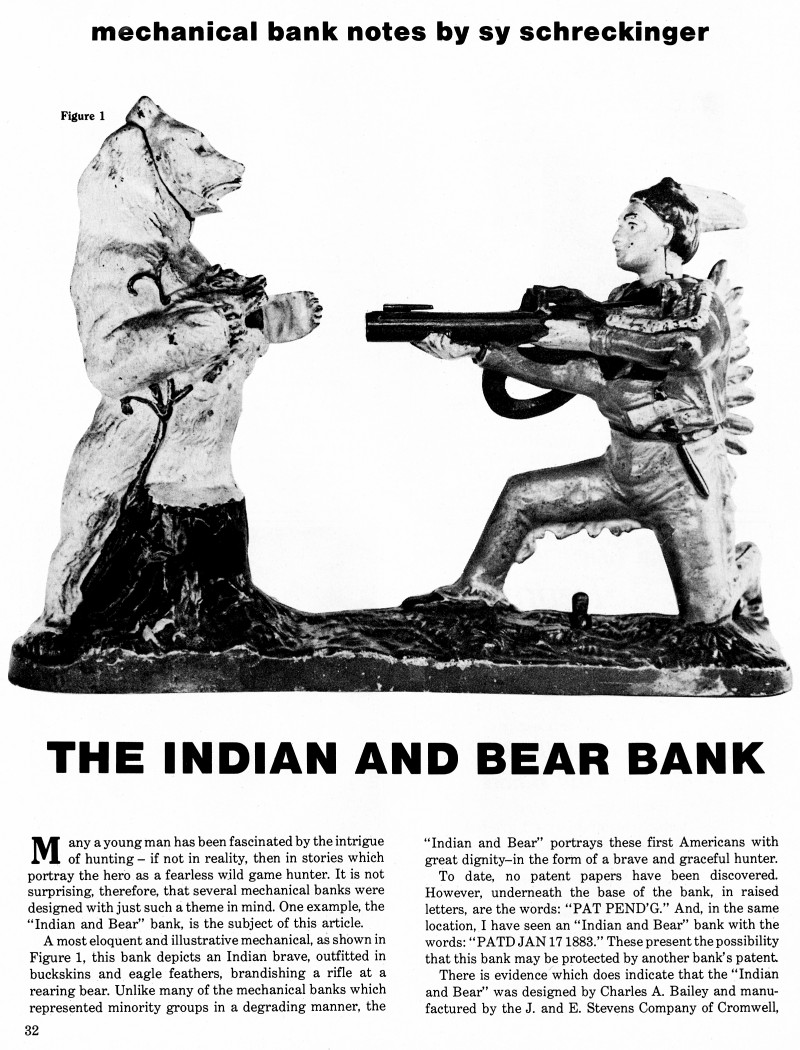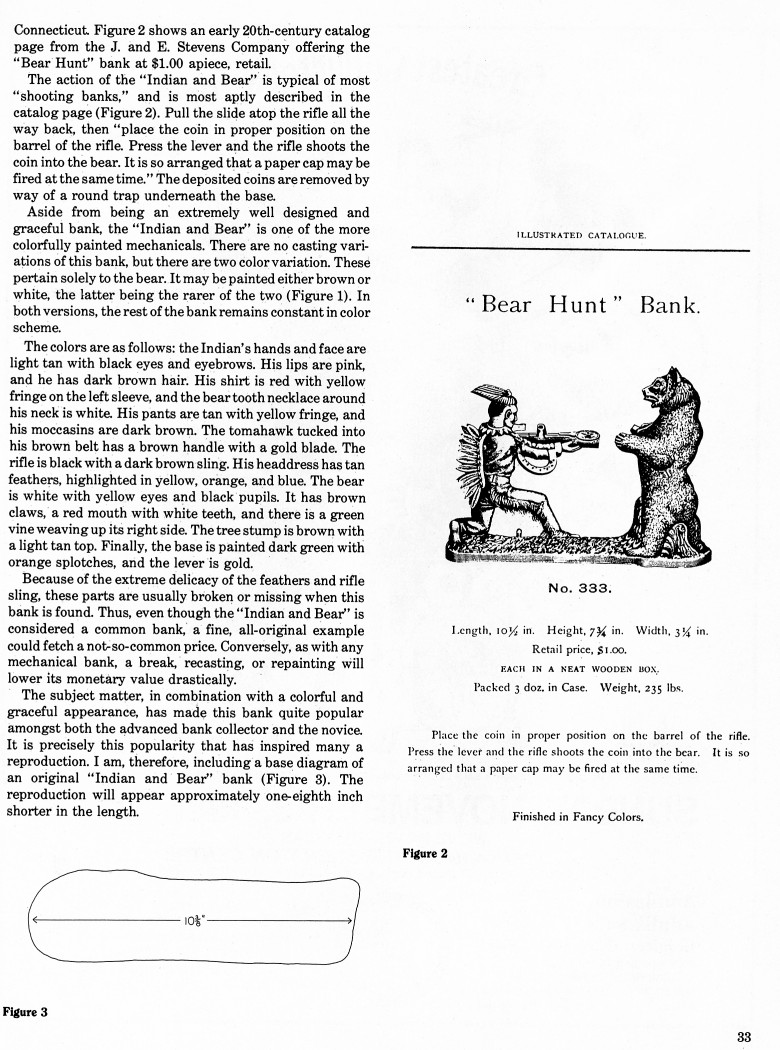|
The Indian and Bear Bank
by Sy Schreckinger – ANTIQUE TOY WORLD Magazine – October, 1985
Many a young man has been fascinated by the
intrigue of hunting – if not in reality, then in stories which portray the
hero as a fearless wild game hunter. It is not surprising, therefore, that
several mechanical banks were designed with just such a theme in mind. One
example, the "Indian and Bear" bank, is the subject of this article.
A most eloquent and illustrative mechanical, as shown in Figure 1,
this bank depicts an Indian brave, outfitted in buckskins and eagle
feathers, brandishing a rifle at a rearing bear. Unlike many of the
mechanical banks which represented minority groups in a degrading manner.
The "Indian and Bear" portrays these first Americans with great dignity – in
the form of a brave and graceful hunter.
To date, no patent papers have been discovered. However, underneath
the base of the bank, in raised letters, are the words: "PAT PEND'G." And,
in the same location, I have seen an "Indian and Bear" bank with the
words: "PATD JAN 17 1883." These present the possibility that this bank
may be protected by another bank's patent.
There is evidence which does indicate that the "Indian and Bear" was
designed by Charles A. Bailey and manufactured by the J. and E. Stevens
Company of Cromwell, Connecticut Figure 2 shows an early 20th-century
catalog page from the J. and E. Stevens Company offering the "Bear Hunt"
bank at $1.00 apiece, retail.
The action of the "Indian and Bear" is typical of most "shooting
banks," and is most aptly described in the catalog page (Figure 2). Pull
the slide atop the rifle all the way back, then "place the coin in proper
position on the barrel of the rifle. Press the lever and the rifle shoots
the coin into the bear. It is so arranged that a paper cap may be fired at
the same time." The deposited coins are removed by way of a round trap
underneath the base.
Aside from being an extremely well designed and graceful bank, the
"Indian and Bear" is one of the more colorfully painted mechanicals. There
are no casting variations of this bank, but there are two color variation.
These pertain solely to the bear. It may be painted either brown or white,
the latter being the rarer of the two (Figure 1). In both versions, the
rest of the bank remains constant in color scheme.
The colors are as follows: the Indian's hands and face are light tan
with black eyes and eyebrows. His lips are pink, and he has dark brown
hair. His shirt is red with yellow fringe on the left sleeve, and the bear
tooth necklace around his neck is white. His pants are tan with yellow
fringe, and his moccasins are dark brown. The tomahawk tucked into his
brown belt has a brown handle with a gold blade. The rifle is black with a
dark brown sling. His headdress has tan feathers, highlighted in yellow,
orange, and blue. The bear is white with yellow eyes and black pupils. It
has brown claws, a red mouth with white teeth, and there is a green vine
weaving up its right side. The tree stump is brown with a light tan top.
Finally, the base is painted dark green with orange splotches, and the
lever is gold.
Because of the extreme delicacy of the feathers and rifle sling,
these parts are usually broken or missing when this bank is found. Thus,
even though the "Indian and Bear" is considered a common bank, a fine,
all-original example could fetch a not so-common price. Conversely, as
with any mechanical bank, a break, recasting, or repainting will lower its
monetary value drastically.
The subject matter, in combination with a colorful and graceful
appearance, has made this bank quite popular amongst both the advanced
bank collector and the novice. It is precisely this popularity that has
inspired many a reproduction. I am, therefore, including a base diagram of
an original "Indian and Bear" bank (Figure 3). The reproduction will
appear approximately one-eighth inch shorter in the length.
|


